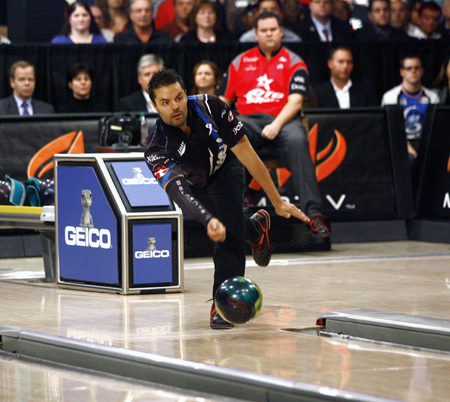What's Your Rev Rate?
What's Your Rev Rate?

There will always been debate about rev rates and how they affect the game of bowling. With new ways to deliver the ball, enhanced equipment characteristics, and lane patterns that can favor one player's rev rate over another, it’s important to understanding rev rates and their characteristics.
At times, we have gone so far as to classify someone’s game exclusively by their perceived rev rate. Titles such as cranker, stroker, and tweener often are applied without taking an accurate measurement. To better understand the concept of a bowler’s revolution rate, we need to answer some basic questions.
Take into consideration that anyone who delivers a bowling ball onto a lane imparts revolutions. What is a revolution? The dictionary definition of a revolution: “the rotation of a celestial body on its axis” so for our bowling application, a bowling ball completing one turn around an axis. What is rev rate? Rev rate is a calculation of the amount of revolutions a bowler imparts on a ball. Now, with these basics, we can determine how to calculate a bowler's revolutions in a common unit, Revolutions Per Minute (RPM).
RPM is a frequency of rotation: the number of full rotations completed in one minute around a fixed axis. This would apply if the bowling ball were on the lane for one minute and turned around the same exact axis the entire time. If that were the case, we would simply count the number of times it goes around to get RPMs.
The USBC Bowling Academy explains RPMs
Even the slowest bowling balls are not on the lane for one minute. An average ball speed of 17 mph, measured at the arrows, has the ball on the lane for about 2-3 seconds. Some people suggest simply counting the number of rotations while a ball is in motion on the lane and calling that the RPMs, but that’s measuring revolutions per shot and not revolutions per minute. The truest place to capture the bowler's effect on the ball is immediately following the release, where the thumb and fingers are exiting.
So, why is knowing a bowler's rev rate important? Understanding rev rate will helps categorize options such as what type of bowling ball to buy, what type of wrist devices may be necessary, or what adjustments and techniques are applied given today’s technology.
The Process to Calculate RPMs
Using a video camera or any recording device to record and calculate a bowler’s revolution rate can be done quickly and accurately. First, identify the bowlers positive axis point (PAP), then once a ball is thrown watch to see if the axis is stable through the first couple of revolutions while the ball is in the air and in contact with the lane. Once we’ve identified the axis, place a strip of tape from the axis to just above the finger holes on the surface of the ball. This is now one of our measuring tools.
Use a video camera to capture the release and play back the video where you can control it one frame at a time.
By starting from the first frame after the fingers leave the ball, measure how many hours of clock time the tape covers in 10 frames. Multiply the number of hours covered in those 10 frames by 15 and you’ll end up with your initial rev rate.
These formulas for calculating rev rate using video can be used:
- Video cameras capturing 30 frames per second (standard NTSC video format used primarily in North America): hours per 10 frames * 15 = RPM
- Other video: (Ex. PAL format used heavily in Asia and Europe) hours per 10 frames * (videos frames per second / 30) *15 = RPM
Practice calculating your rev rate. Training your eyes to measure accurately will improve consistency with measurements. Once you’ve learned to collect your rev rate, test your range and see what your maximum and minimum numbers are. Remember, only rev rates that are repeatable and useable should be practiced and used in competition.





